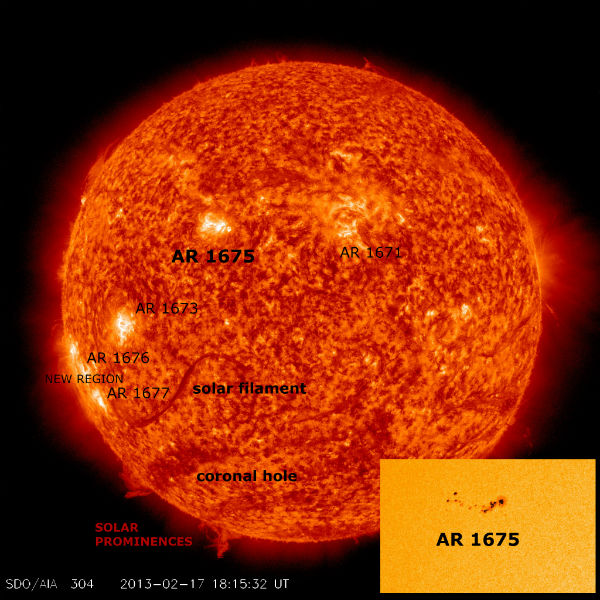Source: The Watchers - 2/18/13, By Nix

Space Weather Message Code: SUM10R
Serial Number: 572
Issue Time: 2013 Feb 17 1601 UTC
SUMMARY: 10cm Radio Burst
Begin Time: 2013 Feb 17 1547 UTC
Maximum Time: 2013 Feb 17 1547 UTC
End Time: 2013 Feb 17 1551 UTC
Duration: 4 minutes
Peak Flux: 340 sfu
Latest Penticton Noon Flux: 103 sfu
Description: A 10cm radio burst indicates that the electromagnetic burst associated with a solar flare at the 10cm wavelength was double or greater than the initial 10cm radio background. This can be indicative of significant radio noise in association with a solar flare. This noise is generally short-lived but can cause interference for sensitive receivers including radar, GPS, and satellite communications.
STEREO spacecrafts and SOHO’s LASCO coronographs show earlier activity, prior to M 1.9 solar flare on February 17, 2013 (Credit: STEREO/SOHO)
Featured image: SDO AIA 171 image of Sunspot AR1675





